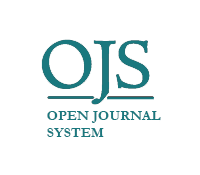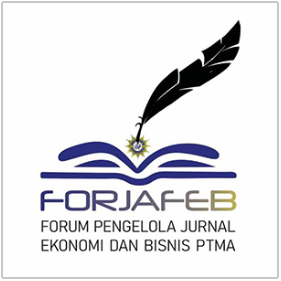Financial Statements Disclosure On Indonesian Local Government : IPSAS And PSAP Disclosure Approach
DOI:
https://doi.org/10.22219/jrak.v12i3.20938Keywords:
Economic Growth, Government Financial, Government Size, Local Government’s Financial Reporting Disclosure, Political CultureAbstract
The objective of this research is to assess and analyze the effect of political culture, government financial, government size, and economic growth on Indonesian local government’s financial reporting disclosure. The financial reporting disclosure of government, particularly the locals, is an important aspect for the fulfillment of users’ need for information. The sample of this research is 320 research data from 64 Indonesian local governments that meet certain criteria. The multiple regression analysis performed on the data has led to findings political culture expressed with the level of openness of local governments and large measures of government is a factor for informants to disclose information in accordance with the provisions of international standards and local governments to be more open. While government finance and economic growth do not influence local governments to disclose information. This is because governments that have better financial conditions tend to have less information disclosure rate. This research can be used by local governments to evaluate their information disclosures and to improve them by referring to applicable standards, guided by IPSAS, and can be used by the committee to enhance the related standard rules.
Downloads
References
Abolhalaje, M., Ramezanian, M., & Bastani, P. (2012). Accrual Accounting Accomplishments In Iranian Universities Of Medical Sciences: A Mixed Method Study. Middle East Journal of Scientific Research, 12(3), 294–300. https://doi.org/10.5829/idosi.mejsr.2012.12.3.666.
Alcaide Muñoz, L., Rodríguez Bolívar, M. P., & López Hernández, A. M. (2017). Transparency In Governments: A Meta-Analytic Review Of Incentives For Digital Versus Hard-Copy Public Financial Disclosures. American Review of Public Administration, 47(5), 550–573. https://doi.org/10.1177/0275074016629008.
Amiri, A., & Hamza, S. E. (2020). The Transition To IPSAS Standards: The Extent Of Adoption And The Influence Of Institutional, Contingency And Economic Network Factors. Journal of Accounting and Management Information Systems, 19(2), 215–251. https://doi.org/10.24818/jamis.2020.02002.
Babatunde, S. (2017). Implementing International Public Sector Accounting Standards In Nigeria: Issues And Challenges. International Journal of Business, Economics and Law, 12(1), 52–61.
Bischof, J., & Daske, H. (2013). Mandatory Disclosure, Voluntary Disclosure, And Stock Market Liquidity: Evidence From The EU Bank Stress Tests. Journal of Accounting Research, 51(5), 997–1029. https://doi.org/10.1111/1475-679X.12029.
BPK. (2010). Peraturan Pemerintah Republik Indonesia Nomor 71 Tahun 2010 Tentang Standar Akuntansi Pemerintah (SAP). https://doi.org/10.1017/CBO9781107415324.004.
Cheng, R. H. (1992). An Empirical Analysis Of Theories On Factors Influencing State Government Accounting Disclosure. Journal of Accounting and Public Policy, 11(1), 1–42. https://doi.org/10.1016/0278-4254(92)90013-N.
Deegan, C. (2004). Financial Accounting Theory. New South Wales: McGraw-Hill Australia.
Dewi, N. F., Ferdous Azam, S. M., & Yusoff, S. K. M. (2019). Factors Influencing The Information Quality Of Local Government Financial Statement And Financial Accountability. Management Science Letters, 9(9), 1373–1384. https://doi.org/10.5267/j.msl.2019.5.013.
Ernst, & Young. (2012). International Public Sector Accounting Standard’s (IPSASS) Disclosure Checklist.
Febriani, U., & Harahap, J. (2021). Analisis Determinan Tingkat Pengungkapan Laporan Keuangan Pemerintah Provinsi Di Indonesia. Journal Of Economics & Managenemt, 1(1), 9–17. https://doi.org/10.57251/reg.v1i1.127.
Handayani, B. D., Rohman, A., Chariri, A., & Pamungkas, I. D. (2020). The Dynamics Of The Political Environment In The Disclosure Of Local Government Financial Statements: An Insight From Indonesia. International Journal of Innovation, Creativity and Change, 11(8), 94–109.
Hassan, O., & Marston, C. L. (2019). Disclosure Measurement In The Empirical Accounting Literature - A Review Article. SSRN Electronic Journal. http://dx.doi.org/10.2139/ssrn.1640598.
Hoffmann, A. O. I., & Kleimeier, S. (2021). Financial Disclosure Readability And Innovative Firms’ Cost Of Debt. International Review of Finance, 21(2), 699–713. https://doi.org/10.1111/irfi.12292.
Ijeoma, B., N., & Oghoghomeh, T. (2014). Adoption Of International Public Sector Accounting Standards In Nigeria: Expectations, Benefits And Challenges. Journal of Investment and Management, 3(1), 21. https://doi.org/10.11648/j.jim.20140301.13.
Inman, R. P. (1995). How To Have A Fiscal Crisis: Lessons From Philadelphia. The American Economic Review, 85(2), 378–383.
Lopes, P. T., & Rodrigues, L. L. (2007). Accounting For Financial Instruments: An Analysis Of The Determinants Of Disclosure In The Portuguese Stock Exchange. International Journal of Accounting, 42(1), 25–56. https://doi.org/10.1016/j.intacc.2006.12.002.
Luder, K. (1992). A Contingency Model Of Governmental Accounting Innovations In The Political Administrative Environment. 7, 99–127.
Marsella, C., & Aswar, K. (2019). An Investigation Of Financial Statement Disclosure In Local Government Financial Statements. International Journal of Business and Economic Affairs, 4(6), 273–281. https://doi.org/10.24088/ijbea-2019-46002.
Mitnick, B. M. (2015). Agency Theory. Wiley Encyclopedia of Management, 1–6. https://doi.org/10.1002/9781118785317.weom020097.
Mnif, Y., & Gafsi, Y. (2020). A Contingency Theory Perspective On The Analysis Of Central Government Accounting Disclosure Under International Public Sector Accounting Standards (IPSAS). Meditari Accountancy Research, 28(6), 1089–1117. https://doi.org/10.1108/MEDAR-04-2019-0480.
Nicolo, G., Zanellato, G., Manes-Rossi, F., & Tiron-Tudor, A. (2021). Corporate Reporting Metamorphosis: Empirical Findings From State-Owned Enterprises. Public Money and Management, 41(2), 138–147. https://doi.org/10.1080/09540962.2020.1719633.
Nor, W., Hudaya, M., & Novriyandana, R. (2019). Financial Statements Disclosure On Indonesian Local Government Websites: A Quest Of Its Determinant(s). Asian Journal of Accounting Research, 4(1), 112–128. https://doi.org/10.1108/AJAR-06-2019-0043.
Ogbuagu, N. ., & Onuora, J. K. . (2019). Effect Of IPSAS Adoption On Accountability And Transparency In The Nigerian Public Sector Organizations. Journal of Accounting and Financial Management, 5(3), 65–80.
Prasad, D., Bruton, G. D., & Vozikis, G. (2000). Signaling Value To Business Angels: The Proportion Of The Entrepreneur’s Net Worth Invested In A New Venture As A Decision Signal. Venture Capital, 2(3), 167–182. https://doi.org/10.1080/13691060050135064.
Priharjanto, A., & Wardani, Y. Y. (2017). Pengaruh Temuan, Tingkat Penyimpangan, Opini Audit, Dan Karakteristik Pemerintah Daerah Terhadap Tingkat Pengungkapan Laporan Keuangan Pemerintah Provinsi Di Indonesia. Info Artha, 1, 97–110. https://doi.org/10.31092/jia.v1i1.72.
Purnama, H. P., & Alfina, P. (2019). Which Ones Are More Important: Characteristics Or Complexities? A Study Of The Disclosure In Local Government Financial Reports. Journal of Business and Information Systems (e-ISSN: 2685-2543), 1(2), 77–88. https://doi.org/10.36067/jbis.v1i2.24.
Rahman, A. (2022). Do Government Characteristics Affect E-Government Maturity? Jurnal Reviu Akuntansi Dan Keuangan, 12, 51–60. https://doi.org/10.22219/jrak.v12i1.20543.
Ritonga, I. T., & Syahrir, S. (2016). Mengukur Transparansi Pengelolaan Keuangan Daerah Di Indonesia: Berbasis Website. Jurnal Akuntansi & Auditing Indonesia, 20(2), 110–126. https://doi.org/10.20885/jaai.vol20.iss2.art4.
Setyowati, L. (2016). Determinan Yang Mempengaruhi Pengungkapan Laporan Keuangan Pemerintah Daerah. Esensi, 6(1), 45–62. https://doi.org/10.15408/ess.v6i1.3120.
Simbolon, H. A. U., & Kurniawan, C. H. (2018). Pengaruh Karakteristik Pemerintah Daerah Terhadap Tingkat Pengungkapan Laporan Keuangan Di Seluruh Indonesia. Jurnal Modus, 30(1), 54–70. https://doi.org/10.24002/modus.v30i1.1587.
Sofyani, H., & Tahar, A. (2021). Peran Akuntabilitas Dan Transparansi Pemerintah Desa Indonesia Terhadap Kepercayaan Masyarakat Desa: Kasus Di Kabupaten Bantul. Jurnal Akademi Akuntansi, 4(1), 10–25. https://doi.org/10.22219/jaa.v4i1.16481.
Tran, Y. T., Nguyen, N. P., & Hoang, T. C. (2021). The Role Of Accountability In Determining The Relationship Between Financial Reporting Quality And The Performance Of Public Organizations: Evidence From Vietnam. Journal of Accounting and Public Policy, 40(1), 106801. https://doi.org/10.1016/j.jaccpubpol.2020.106801.
Downloads
Published
Issue
Section
License
Copyright (c) 2022 liacandra299, Erwin Saraswati, Abdul Ghofar

This work is licensed under a Creative Commons Attribution-NonCommercial-ShareAlike 4.0 International License.

Jurnal Reviu Akuntansi dan Keuangan is licensed under a Creative Commons Attribution-NonCommercial-ShareAlike 4.0 International License.
Authors who publish with this journal agree to the following terms:
- Authors retain copyright and grant the journal right of first publication with the work simultaneously licensed under a Creative Commons Attribution-NonCommercial-ShareAlike 4.0 International License that allows others to share the work with an acknowledgement of the work's authorship and initial publication in this journal.
- Authors are able to enter into separate, additional contractual arrangements for the non-exclusive distribution of the journal's published version of the work (e.g., post it to an institutional repository or publish it in a book), with an acknowledgement of its initial publication in this journal.
- Authors are permitted and encouraged to post their work online (e.g., in institutional repositories or on their website) prior to and during the submission process, as it can lead to productive exchanges, as well as earlier and greater citation of published work (See The Effect of Open Access).










